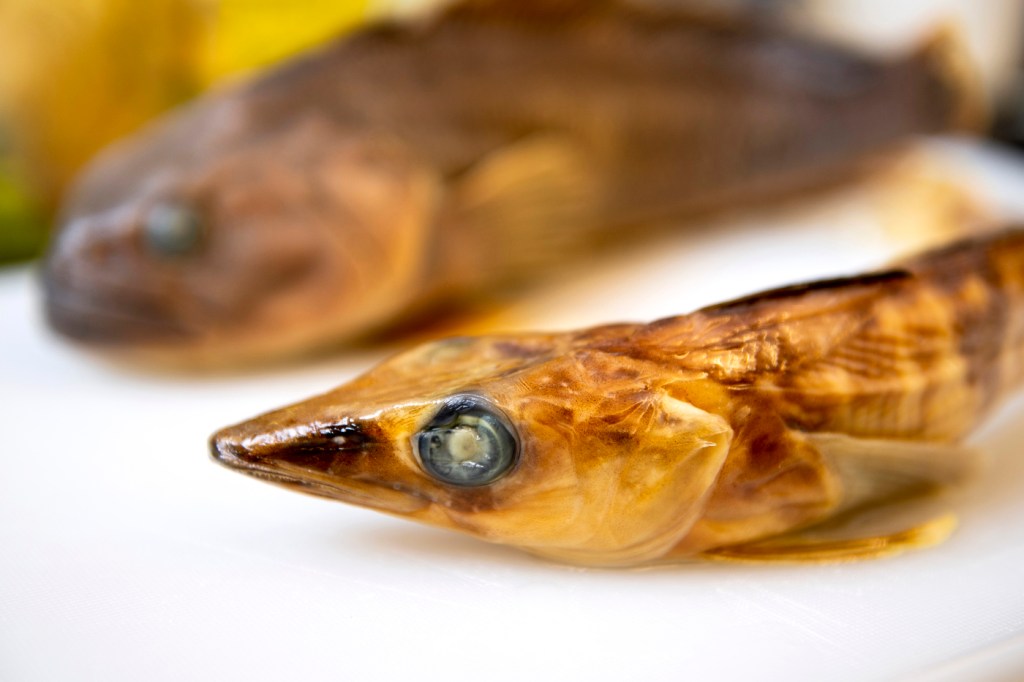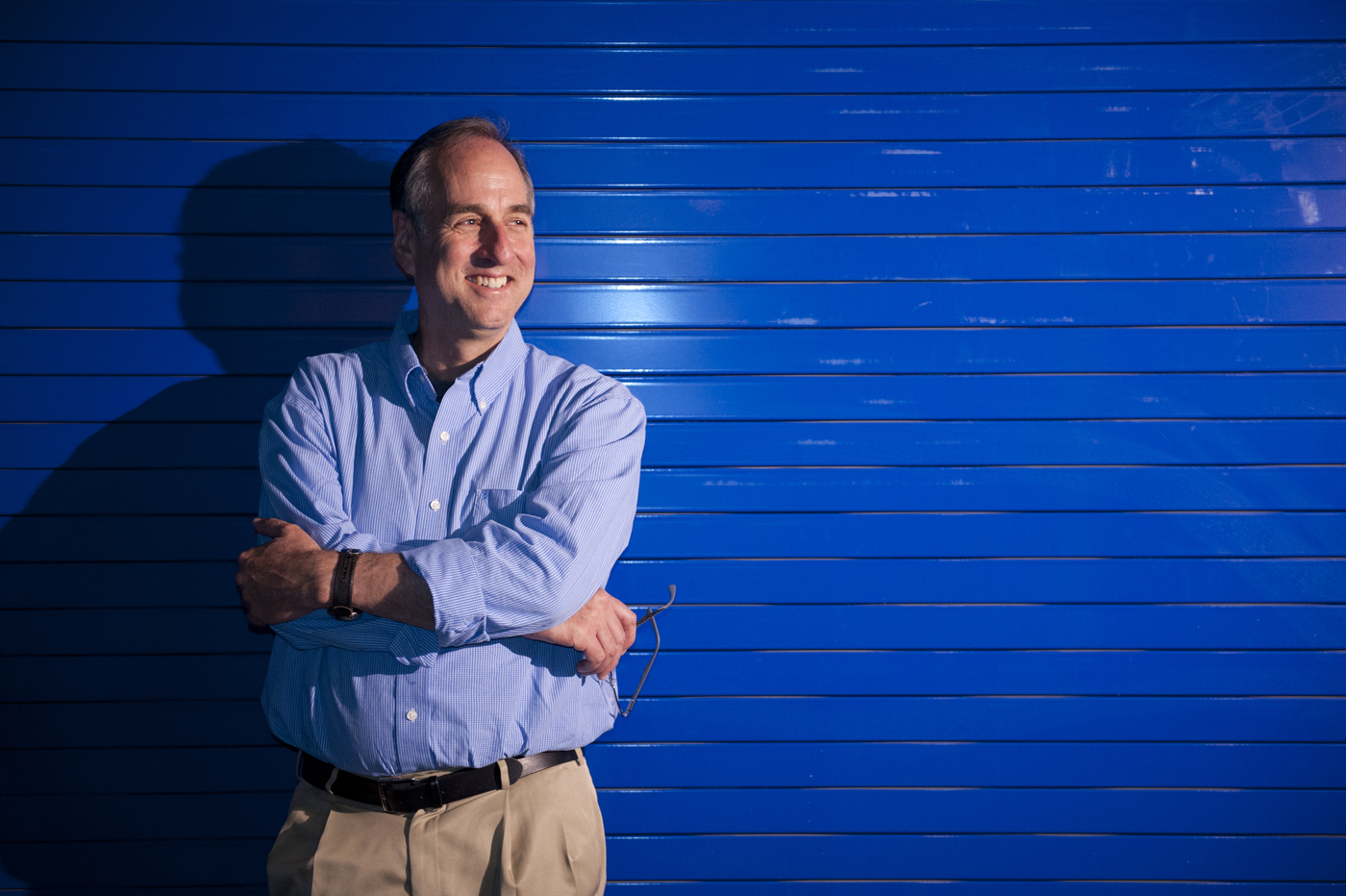What happens to decades of deep-sea specimens when a scientist retires? They might not end up in the trash–anymore.

Not everyone can go to Antarctica. But H. William Detrich has been there more times than he can count.
“I think more trips than I have fingers and toes—and I have all of them,” says the Northeastern professor of marine and environmental sciences.
Detrich has returned from each trip with specimens and tissue samples from many previously unstudied fish that are uniquely adapted to live in the dark, frigid waters around Antarctica. Some fish, he found, even have antifreeze in their veins. And Detrich brought their DNA back to his laboratory to further probe biology’s capacity to adapt to extreme environments.
Detrich has amassed quite a collection of tissue samples and icefish DNA over the course of more than 30 years. Those vast collections that scientists build over their careers are often the backbone of paradigm-shifting discoveries. Scientists like Detrich can return to the collection again and again to make new discoveries and compare samples of new species with ones they’ve previously studied. But what happens to all of that scientific material when a researcher retires?

H William Detrich is a professor of marine and environmental sciences at the Marine Science Center in Nahant, Massachusetts. Photo by Matthew Modoono/Northeastern University
The options are limited. For some, a protégée might inherit some or all of the collection. Or a select few specimens may be of interest to museums or colleagues. But collections require space and maintenance to be preserved properly, and without active research funding or attention, they might be discarded by an institution to make space for something new.
“There are a lot of scientists all over the world who build these fantastic collections over the course of a career and don’t really think about what’s going to happen to them after they retire,” says Dan Distel, a research professor at Northeastern’s Marine Science Center in Nahant, Massachusetts. “And usually they don’t think of it until it’s kind of too late, and many of them end up in the dumpster, which is a terrible shame.”
Research missions to remote places like Antarctica or the deep sea can cost millions of dollars in grant funding to pay for the ship, submarine, or other sophisticated tools needed to access those environments, Distel says. Furthermore, the vast majority of the ocean has yet to be explored, so every collection offers a significant body of knowledge to our understanding of the diversity of marine biology—and most samples can be studied over and over to glean more information.
Distel and his team decided to make it easier for retiring marine scientists by providing them with a home for their collections where the samples can continue to be mined for new insights. And so began a new project: the Genome Resource Rescue Project at the Ocean Genome Legacy Center, a nonprofit marine DNA genome bank at the Marine Science Center.
The Ocean Genome Legacy Center acquires DNA and tissue samples to preserve (usually in a special freezer) and share through an open-access collection. So far, the center has amassed more than 29,000 DNA samples that represent over 3,000 identified species of sea life, and researchers from around the world can access that collection for their own studies.

Dan Distel is executive director of the Ocean Genome Legacy at the Marine Science Center in Nahant, Massachusetts. Northeastern University Photo
Preserving researchers’ hard-earned collections isn’t just about keeping the biological material itself protected. It also means reconstructing the context of each specimen from researchers’ notes and other records—the metadata. Without that context, Distel says, the specimens have much less value.
There’s a lot to sort through to make sense of all of that data, however. And that takes an experienced curator, Detrich says. Part of his collection is being integrated into the Ocean Genome Legacy Center’s DNA bank.
“I have research notebooks that I recorded information about all our field seasons: When we go fishing, where we go fishing, the depths at which we captured fish, the number of fish, and so on and so forth. And then we have logs of our tissue dissections,” Detrich says. “We have a log with the date we sample, the samples that we took, how we collected the samples, what we did with the blood versus whatever. That’s another set of metadata that’s critical to understanding the provenance of the samples.”
Co-op students working with the Ocean Genome Legacy Center and other curators there filter through all of the archival records that come with a researcher’s collection and attach it to the appropriate samples. Sometimes a researcher’s notes leave some room for uncertainty, so the curators go back to the researcher or into the other data and dig up the answers. That way when other researchers want to study samples in the collection, they can also easily access the necessary context.
One thing that the Ocean Genome Legacy Center team looks for in a collection is something called “voucher specimens.” Those are samples that can be used to vouch for a species identification. In other words, if someone collects something and thinks it belongs to a particular species, they can confirm it by comparing it to the preserved voucher. Voucher specimens can be a whole preserved organism, or they could be diagnostic parts such as a shell, or even photographs of the species that meet certain requirements. These voucher materials add value to the DNA and tissue samples collected by the Ocean Genome Legacy.
In addition to Antarctic fish specimens from Detrich’s collection, the Ocean Genome Legacy Center also has received a collection of colorful marine flatworm samples, specimens from around deep-sea hydrothermal vents and cold seeps, and more.
Detrich says his contributions to the Ocean Genome Legacy Center’s collection are a chance to “democratize access” to studying Antarctic sea creatures.
“Polar research is incredibly difficult to break into unless you’ve actually had the opportunity to go” there, he says. “When you send in a proposal [for a grant], usually you want to be able to convince your reviewers that you’ve actually worked with something and have some preliminary results that give confidence that the proposal is one that would be reasonable to fund.” That, he says, requires data from working with relevant material.
As for Detrich, if he hadn’t been invited through a former mentor to join a research group at Antarctica’s McMurdo Station and then later another team at Palmer Station, he may never have begun studying icefish. “I probably would’ve been working on the cytoskeleton of sea urchins, which is what I was doing as a postdoc,” he says. (Detrich recalls that his first proposal to the National Science Foundation to work in Antarctica was to study an Antarctic sea urchin. It was rejected, so he pivoted to fish.)
“I view this as a means of paying forward very useful materials that I’ve collected so that future researchers can make use of it,” Detrich says of his participation in the Genome Resource Rescue Project. “It means I’m helping with the provision of materials that could get other researchers started on a career in Antarctic science.”
For media inquiries, please contact Shannon Nargi at s.nargi@northeastern.edu or 617-373-5718.





